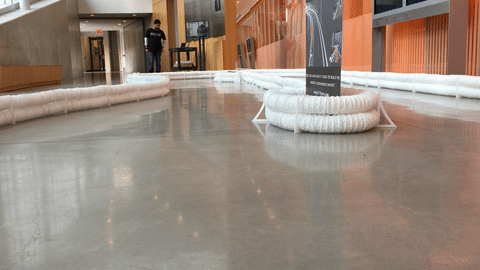Mobility21: Kicking off a Transportation ‘R&D&D’ Partnership
This week, Penn Engineering hosted the kick-off meeting for Mobility21, a new research partnership funded by a five-year, $14 million grant from the Department of Transportation. The goal: to leverage new information and sensing technologies to get people from point A to point B more safely and efficiently.
Penn’s arm of the partnership, the third of its type for the University, will operate out of the PRECISE Center under the leadership of its co-director, Rahul Mangharam, associate professor in the departments of Electrical and Systems Engineering and in Computer and Information Science.

The PRECISE Center’s expertise in embedded systems and the Internet of Things are a match for many of Mobility21’s aims, which include developing a “driver’s license test” for autonomous cars — formalizing safety assurances in their software — and leveraging information networks to optimize commuting routes.
Mobility21 is designed to reach beyond the typical channels through which academic research flows.
“A key aspect of this partnership is captured in the idea of ‘R&D&D,’ or research and development and deployment,” Mangharam said. “This is the philosophy we want to have here at Penn. We don’t want this research to be locked up in academic journals.”
Interdisciplinary connections are one facet of this approach. Megan Ryerson and Erick Guerra of the School of Design’s Department of City and Regional Planning have leadership roles on the Penn team, but the collaboration will also include Law’s Christopher Yoo and Tom Baker, Wharton’s Gilles Duranton, and the Children’s Hospital of Philadelphia’s Flaura Winston and Helen Loeb.

Outside of Penn, Mobility21 — now one of five University Transportation Centers in the country — will be headquartered at Carnegie Mellon University and draw on researchers from the Community College of Allegheny County and The Ohio State University.
On the “deployment” side, Mobility21 will partner with various civic bodies on local, regional and national levels. Representatives from Philadelphia’s Office of Transportation and Infrastructure Systems, Streets Department, the Pennsylvania Department of Transportation, the Delaware Valley Regional Planning Commission, Los Angeles’ Department of Transportation and Amtrak were on hand for the kick-off meeting, explaining some of the challenges they face and their vision for the future of transportation and smart cities.

A common theme in their discussions was that traditional mass transportation systems run into “first-mile, last-mile” problems. Busses, trains and subways might serve the vast majority of a given city, but the gap between a traveler’s front door and the closest stop still remain a barrier to them being used to their full potential. Such gaps are especially challenging for people with disabilities or the elderly.
Mobility21 seeks to fill those gaps with vehicles, in the form of shared bikes or cars, as well as with information; the less guesswork or planning a traveler has to do to make use of these systems, the more they’ll be used. Ride-sharing services, like Uber or Lyft, provide a model of this kind of ease-of-use, but it will take partnerships like Mobility21 to integrate multiple pieces of civic infrastructure into a comprehensive system.
“Transportation is a multidimensional problem,” Mangharam said. “It requires us to think from a human societal perspective, and on short and long timescales — from milliseconds to decades.”
Whether it is the decision-making algorithms that tell a self-driving car when to apply the brakes, or the optimal design of bridges and bus shelters that take a changing climate into consideration, the societal engagement aspect of Mobility21’s “deployment” aim will be the key to its success.
As Michael Zaccagni, chief of staff at Philadelphia’s Office of Transportation and Infrastructure Systems, said in his keynote address, “Nothing happens unless the people are excited.”
